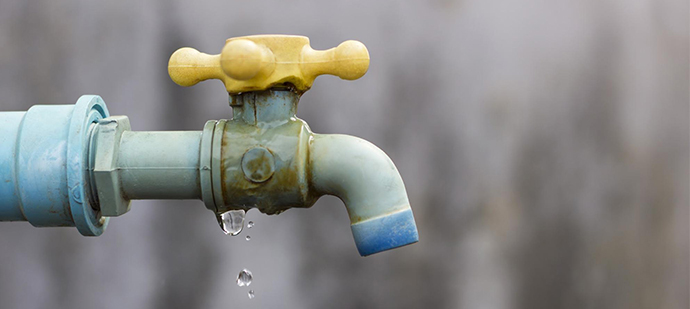Everyone maintains their unique assumption with regards to Locating water leaks.

Early detection of dripping water lines can reduce a possible disaster. Some little water leaks might not be noticeable.
1. Analyze the Water Meter
Every residence has a water meter. Checking it is a guaranteed way that assists you find leakages. For starters, shut off all the water resources. Ensure nobody will certainly flush, utilize the tap, shower, run the cleaning device or dish washer. From there, most likely to the meter and watch if it will alter. Since nobody is utilizing it, there should be no motions. That indicates a fast-moving leak if it moves. If you spot no modifications, wait a hr or 2 and also check back again. This implies you might have a sluggish leak that might also be below ground.
2. Examine Water Consumption
Assess your water expenses as well as track your water intake. As the one paying it, you should discover if there are any type of inconsistencies. If you find sudden changes, in spite of your consumption being the same, it means that you have leaks in your plumbing system. Bear in mind, your water costs need to drop under the exact same variety each month. An unexpected spike in your expense indicates a fast-moving leak.
A consistent boost every month, also with the exact same practices, reveals you have a slow leakage that's likewise slowly rising. Call a plumber to completely check your home, especially if you really feel a warm location on your flooring with piping underneath.
3. Do a Food Coloring Test
30% comes from toilets when it comes to water usage. Test to see if they are running effectively. Decrease flecks of food color in the container as well as wait 10 mins. There's a leak in between the container as well as dish if the color in some way infiltrates your dish throughout that time without flushing.
4. Asses Exterior Lines
Don't fail to remember to inspect your outdoor water lines as well. Must water permeate out of the link, you have a loosened rubber gasket. One tiny leak can waste heaps of water and also increase your water costs.
5. Assess the situation and also inspect
Homeowners ought to make it a practice to check under the sink counters and even inside cabinets for any bad odor or mold and mildew development. These 2 warnings suggest a leak so timely interest is required. Doing routine inspections, also bi-annually, can conserve you from a significant issue.
Examine for discolorations and also deteriorating as a lot of appliances and pipelines have a life span. If you think leaking water lines in your plumbing system, do not wait for it to rise.
Early detection of dripping water lines can minimize a potential catastrophe. Some little water leaks might not be visible. Examining it is a guaranteed means that helps you uncover leaks. One small leakage can squander tons of water as well as surge your water costs.
If you suspect dripping water lines in your plumbing system, do not wait for it to intensify.
How to Know If Your Home Has a Hidden Leak
Water Meter Reveals Inexplicable Water Usage
If you’d like to test whether or not there’s a leak somewhere in your home, you can do this using your water meter. Here is how to conduct the test:
Don’t use any water in your home for at least 30 minutes; this also means not turning on faucets or water-using appliances.
Go outside, and check your water meter for activity.
If your water meter shows that there was activity, even though no one was using any water, this proves that there is a leak in your home.
Visible Mold or Mildew Growth
Leaks behind walls create moist, dark environments that allow mold and mildew to grow and thrive. Eventually, you might see mold growth forming on the wall closest to a hidden leak.
If mold is growing in an area that receives a high amount of moisture, such as a bathroom, it may simply be an indication that better ventilation is needed. However, if you see mold growth on a wall or the ceiling in an area where you would not expect, you probably have a hidden leak.
Musty, Mildew Odor
Sometimes you might not be able to see the mold or mildew that is growing as a result of a leak. However, the smell can give the problem away just as easily. If you catch a whiff of something musty, there’s a good chance that old water is collecting somewhere in your home that you can’t see.
Stained/Warped Walls, Ceilings, or Floors
When your home soaks up water, a variety of red flags can become visible, including ceiling stains, bubbling drywall, warped walls, and sagging floors. While these issues can be caused by excess humidity, they can also be signs that a pipe or plumbing connection has started leaking behind your walls.
Inexplicably High Water Bill
After a while, you get a general sense for what your water bill should be. If you own a pool or sprinkler system, your bill will tend to be higher during summer. However, if you receive a water bill that seems especially high, and you can’t figure out what caused it, then you may have a hidden leak somewhere that’s increasing your bill.
https://www.plumbingjoint.com/blog/2019/july/how-to-know-if-your-home-has-a-hidden-leak/

I'm certainly very occupied with Leaking water lines and I'm hoping you enjoyed our page. Enjoyed reading our write up? Please share it. Help somebody else locate it. I praise you for your time. Come back soon.
Comments on “Just how to Locate as well as Repair Work Water Leaks-- A Comprehensive Guide”